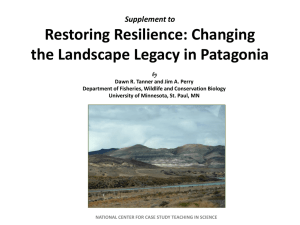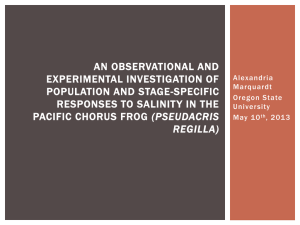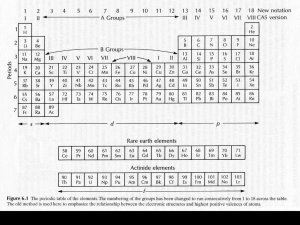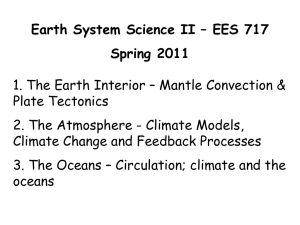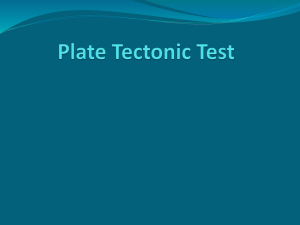slide1
advertisement
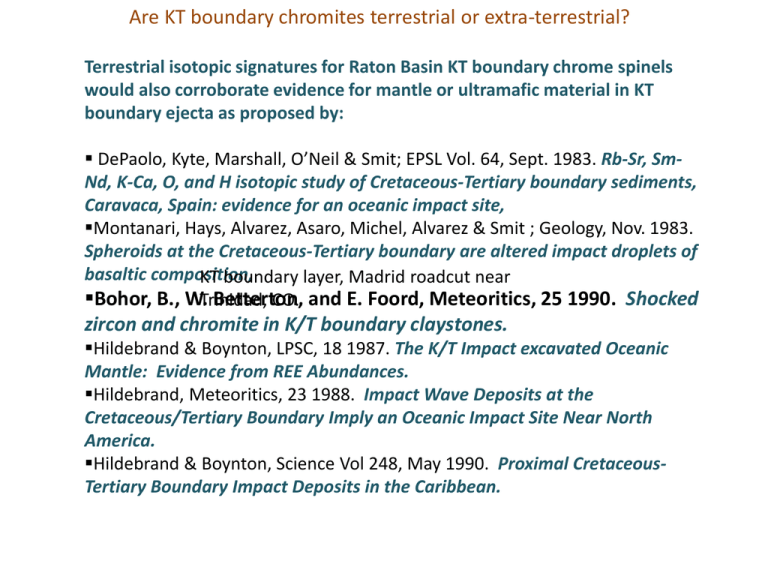
Are KT boundary chromites terrestrial or extra-terrestrial? Terrestrial isotopic signatures for Raton Basin KT boundary chrome spinels would also corroborate evidence for mantle or ultramafic material in KT boundary ejecta as proposed by: DePaolo, Kyte, Marshall, O’Neil & Smit; EPSL Vol. 64, Sept. 1983. Rb-Sr, SmNd, K-Ca, O, and H isotopic study of Cretaceous-Tertiary boundary sediments, Caravaca, Spain: evidence for an oceanic impact site, Montanari, Hays, Alvarez, Asaro, Michel, Alvarez & Smit ; Geology, Nov. 1983. Spheroids at the Cretaceous-Tertiary boundary are altered impact droplets of basaltic composition, KT boundary layer, Madrid roadcut near Bohor, B., W.Trinidad, Betterton, CO. and E. Foord, Meteoritics, 25 1990. Shocked zircon and chromite in K/T boundary claystones. Hildebrand & Boynton, LPSC, 18 1987. The K/T Impact excavated Oceanic Mantle: Evidence from REE Abundances. Hildebrand, Meteoritics, 23 1988. Impact Wave Deposits at the Cretaceous/Tertiary Boundary Imply an Oceanic Impact Site Near North America. Hildebrand & Boynton, Science Vol 248, May 1990. Proximal CretaceousTertiary Boundary Impact Deposits in the Caribbean. Raton Basin, Colorado ( Wikipedia geologic map) Bruce Bohor collecting Raton Basin KT boundary ejecta at an outcrop in June 2010. Location: Clear Creek North roadcut on Hwy 25. Raton Basin KT boundary claystone “melt ejecta” layer visible below a coal seam. Acid resistant mineral grains from Raton Basin KT boundary claystones mounted on SEM stub. Chromite from Raton Basin KT boundary claystones, Clear Creek North outcrop showing possible shock induced planar deformation features (pdf). Thanks Tim Teague! Chromite from Raton Basin KT boundary claystones, Madrid outcrop. 140 microns wide, 160 microns corner to corner diagonal. Probably acid etched crystal faces. Figure 2 from Trinquier et al. 2006 The nature of the KT impactor. A 54Cr reappraisal Earth and Planetary Science Letters 241 (2006) 780–788 Whole rock 54Cr/52Cr isotope analysis on Raton Basin KT boundary claystones is within uncertainty of terrestrial. Fig. 2. 54Cr/ 52Cr values for KT rocks compared to common classes of meteorites and terrestrial rocks. HED represent the eucrites, and diogenites. The mesosiderite and main group pallasite silicates plot at the same position as the HED group. OC are ordinary chondrites (H, L, LL) from various petrological types (4 to 6). CC are carbonaceous chondrites from distinct metamorphism grade (1 to 4), some samples of which are quoted in Table 2. All values are given after exponential correction [20] as relative deviations in 104 from the laboratory standards (e-unit). Cr data are normalized to NBS 52Cr/ 50Cr=19.28323 [54]. All uncertainties are 2r. Data after [18]. Exercise in simple logic: The Raton Basin KT boundary chromites are either terrestrial or extra-terrestrial. Chromite is a minor mantle mineral, typically present in depleted oceanic harzburgites at the 2-3% level. If Colorado KT boundary chromites turn out to be terrestrial it is strongly implied that the Chicxulub crater is not the only large KT boundary crater. Chicxulub crater is on continental crust away from any plate boundaries, and based on scaling considerations, the impact was not large (energetic) enough to have excavated mantle material from beneath the MOHO at ~35 km depth on the Yucatan platform. (See Melosh, 2001.) If the chromites turn out to be extra-terrestrial, we will learn something about the KT impactor. Various meteorite types have unique chromium isotopic compositions different than the earth's mantle, which is essentially homogeneous with respect to Cr isotope composition. (Trinquier et. al. 2006, Qin et al. 2010.) We are currently carrying out TIMS Cr isotope analysis in Justin Simon’s lab at Johnson Space Center, Houston. What is the point? If the Colorado KT boundary chrome spinels are terrestrial, then either 1. An additional piece of bolide hit on or near a plate boundary where ultramafics were already exposed at or near the surface; or 2. An additional much larger (than Chicxulub) fragment penetrated to and excavated mantle material from beneath the crust; or 3. Possibly both of the above. 4. If the lithosphere was breached then there may be implications for the origin and evolution of the Caribbean North-American plate boundary. Combined effect of both homogeneously distributed and discontinuous left-lateral shear on a circle. S shape of Greater Antilles ultramafic belt can be modeled as a combination of continuous and discontinuous left lateral simple shear on a hypothetical ~600 km diameter circular impact crater. To first order, the Greater Antilles island chain and ultramafic belt appear to define a left-lateral shear strain ellipse. So is this the remnant of a lithosphere penetrating impact crater after 45-50 ma of left lateral shear across the North American – Caribbean plate boundary? North American Plate Caribbean Plate
